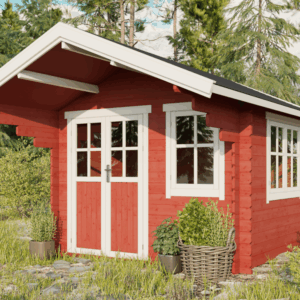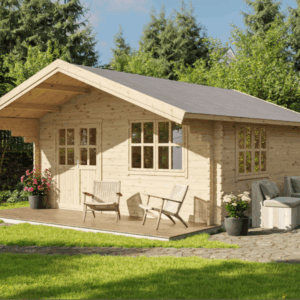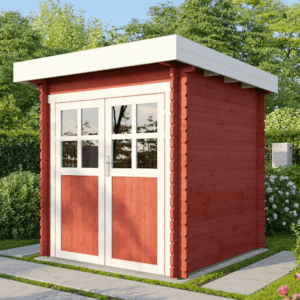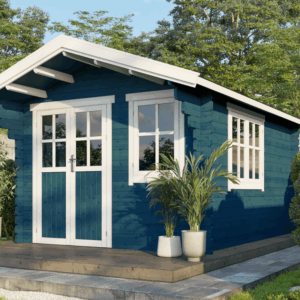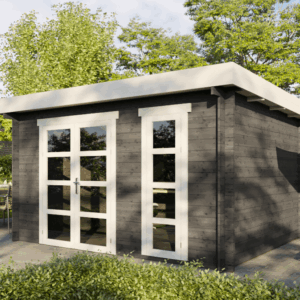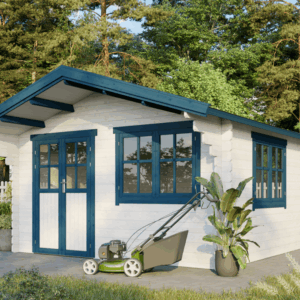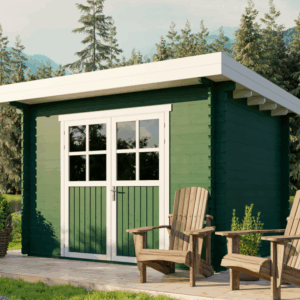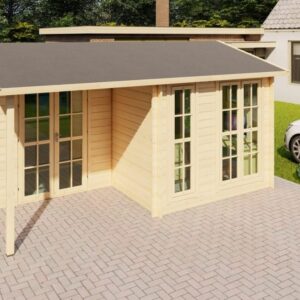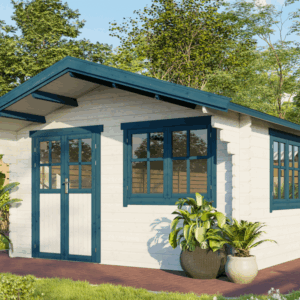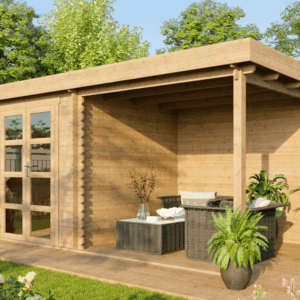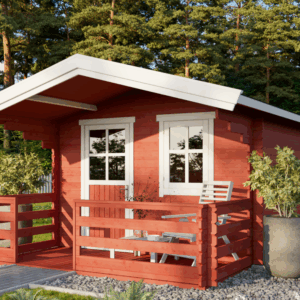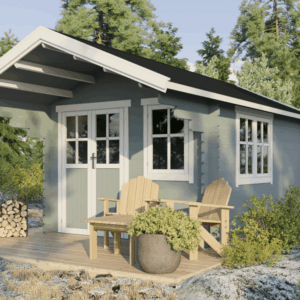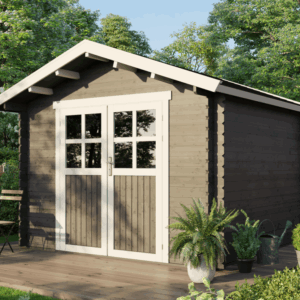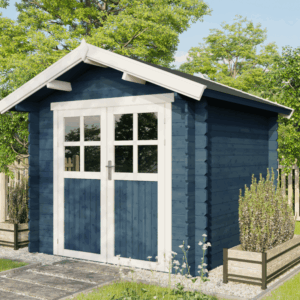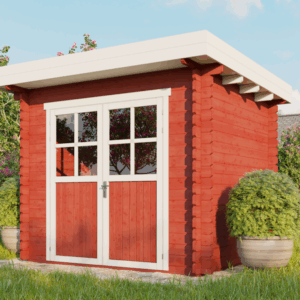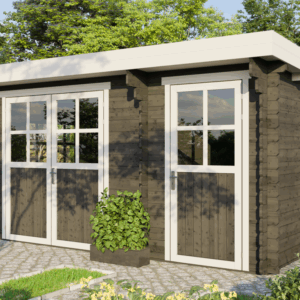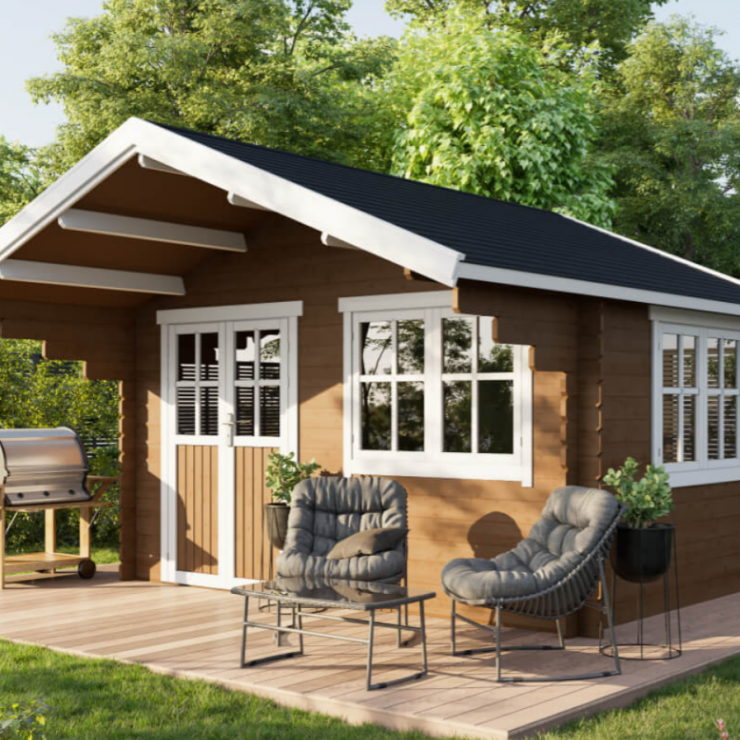Ardmore, a picturesque coastal village in County Waterford, Ireland, offers a unique blend of natural beauty and historical charm. Nestled amidst rolling hills, dramatic cliffs, and the sparkling Atlantic Ocean, Ardmore provides the perfect backdrop for a tranquil escape. For those seeking a unique and sustainable living experience, log cabins in Ardmore represent an attractive alternative to traditional housing. This comprehensive guide will explore everything you need to know about log cabins in Ardmore, from the planning stages to enjoying your finished retreat, empowering you to make informed decisions and realise your dream of owning a log cabin in this stunning location.
Why Choose a Log Cabin in Ardmore, Ireland?
The allure of a log cabin extends beyond its rustic aesthetic. In Ardmore, a log cabin offers a deep connection to nature and a sense of peaceful isolation, qualities highly valued in today’s fast-paced world. The natural beauty of the area complements the organic nature of a log cabin, creating a harmonious environment. Unlike some modern building materials, log cabins offer a healthier living environment due to the breathability of the wood, regulating humidity and potentially reducing allergens, making them ideal for a coastal environment with fluctuating moisture levels.
Furthermore, log cabins can be more energy-efficient than traditional homes, particularly those constructed with sustainable forestry practices. The inherent thermal mass of the timber helps to regulate temperature, reducing the reliance on heating and cooling systems, which is especially important in a coastal climate. With the rising cost of energy, the long-term cost savings associated with log cabin living can be substantial. Finally, the growing popularity of sustainable and eco-friendly living adds to the appeal of log cabins, perfectly aligning with Ardmore’s natural beauty and community values.
Planning Your Ardmore Log Cabin: Key Considerations
Embarking on a log cabin project in Ardmore requires careful planning and attention to detail. This section covers the crucial aspects to consider before breaking ground, ensuring a smooth and successful build. Thorough planning is essential to avoid potential pitfalls and maximize the enjoyment of your new home. Research is key, and seeking advice from experienced professionals is invaluable.
Choosing the Right Location
Selecting the ideal location is paramount to the success of your log cabin project in Ardmore. Consider factors such as sunlight exposure, wind protection, and views, as these will significantly impact your daily living experience. Ardmore offers a variety of locations, from secluded woodland sites to coastal plots with breathtaking ocean views. Ensure that the chosen site has the necessary infrastructure, including access to utilities like water, electricity, and sewage, and investigate any planning restrictions relevant to the specific location and local council regulations.
Moreover, think about the local microclimate and how it might influence your log cabin design. A sheltered location can help to minimise the impact of strong coastal winds, while strategic orientation can maximise solar gain. Also, research any potential risks like flooding or erosion, especially in coastal areas. It is advisable to consult local real estate agents and planning consultants who understand the nuances of the Ardmore area and can help you identify a suitable and compliant site for your log cabin.
Understanding Planning Permission and Regulations
Navigating the planning permission process is a critical step in building a log cabin in Ireland. Different regions have varying regulations, and it is crucial to understand and comply with Waterford County Council’s specific requirements. The application process can be complex, involving architectural drawings, site surveys, and environmental assessments. The design, size, and intended use of the log cabin will all influence the likelihood of approval.
The council will assess the proposal against its development plan, local amenities, and environmental impacts. It’s recommended to consult a local architect or planning consultant familiar with Ardmore and Waterford County Council. They can guide you through the process, ensuring your application meets all the necessary criteria and has the best chance of success. Understanding building regulations, including insulation standards and fire safety requirements, is also vital to a safe and compliant build.
Selecting the Right Log Cabin Design and Materials
The design and material choices will significantly impact the aesthetics, functionality, and longevity of your log cabin. There are various log cabin designs available, from traditional Scandinavian styles to more modern, contemporary options. Consider the overall style, layout, and size that best suits your needs and preferences. Factor in the number of bedrooms, living areas, and any additional features like a porch or deck.
Furthermore, the choice of materials is crucial for the durability and environmental sustainability of your log cabin. Consider using sustainably sourced timber, such as from FSC-certified forests, and choose high-quality insulation materials. The thickness of the logs, type of joints, and type of wood treatment products affect the overall quality and lifespan of the log cabin. Research different log cabin manufacturers and suppliers to find one with a proven track record of quality and experience in the Irish market, and ideally, those familiar with the specific coastal climate of Ardmore.
Building Your Ardmore Log Cabin: The Construction Process
Once you have a suitable plan and the necessary permissions in place, the construction phase can begin. This part covers the key stages of building your log cabin, providing insights into the construction process. It is important to stay involved and monitor progress throughout the build, ensuring that everything is being done to the agreed specifications.
Foundation and Base Construction
The foundation provides a solid base for your log cabin and protects it from ground moisture. In Ardmore, a concrete slab foundation is a common choice, but other options like pier foundations or raft foundations may be suitable depending on the soil conditions and the overall design. Proper preparation of the site, including levelling and drainage, is essential for a long-lasting foundation.
Carefully consider the location of the foundation and its impact on drainage and the surrounding landscape. The foundation must be built to meet local building regulations and ensure the stability of the structure. Regular inspections by building professionals are advisable to ensure the foundation is properly constructed and compliant. Ensuring that the foundation is waterproofed is essential in a coastal environment where high humidity and rainfall are common.
Log Cabin Assembly and Wall Construction
The assembly of the log walls is the defining stage of the log cabin construction. This involves interlocking the logs, often using a tongue-and-groove system or dovetail joints, to create the walls. This process requires precision and attention to detail. Skilled builders are crucial for ensuring the logs are correctly aligned and sealed, preventing air leaks and water penetration.
The specific method of assembly will vary depending on the log cabin design and the manufacturer. The construction of the walls often involves the installation of windows and doors, and the placement of insulation within the walls. It is important to choose materials that will withstand the coastal climate. Proper sealant and treatment of the logs are crucial to protect against moisture and rot, ensuring the longevity of the structure. Hiring experienced professionals who specialize in log cabin construction is highly recommended for this stage.
Roofing, Finishing, and Interior Design
Once the walls are complete, the roofing, finishing, and interior design can begin. The roofing system protects the log cabin from the elements and should be chosen to withstand the local climate, considering wind and rain exposure. Choose a roofing material such as tiles, slate, or a metal roof. Proper insulation of the roof is essential for energy efficiency and comfort.
The finishing stage involves adding windows, doors, electrical and plumbing systems, and interior finishes such as flooring, wall treatments, and interior design. Choosing energy-efficient windows and appliances will minimize your environmental footprint and reduce your running costs. Interior design should reflect your personal taste and complement the rustic charm of the log cabin, creating a cozy and welcoming space. Consider using natural materials and local crafts to enhance the authentic character of your Ardmore log cabin.
Enjoying Your Ardmore Log Cabin: Lifestyle and Maintenance
Owning a log cabin in Ardmore offers a unique lifestyle opportunity. This section delves into the pleasures and responsibilities of log cabin ownership, ensuring a fulfilling experience. Regular maintenance will preserve your investment and guarantee a long and enjoyable life for your cabin.
Embracing the Ardmore Lifestyle
Ardmore offers a wealth of recreational activities and a strong sense of community. From breathtaking coastal walks and surfing opportunities to exploring historical sites like Ardmore Round Tower and enjoying the local pubs and restaurants, there’s something for everyone. Owning a log cabin in Ardmore provides a base for experiencing all that this beautiful area has to offer.
Consider integrating your log cabin into the local community. Supporting local businesses, participating in community events, and exploring the natural beauty of the region can enhance your overall experience. The peaceful and rejuvenating atmosphere of Ardmore makes it a perfect retreat from the hustle and bustle of city life, inviting you to slow down, relax, and reconnect with nature and yourself.
Maintaining Your Log Cabin
Regular maintenance is essential to preserving the beauty and structural integrity of your log cabin. The frequency and type of maintenance required will vary depending on the climate and the specific materials used. Protecting your investment requires a commitment to routine upkeep. The goal is to catch any issues early before they develop into bigger, more costly problems.
The primary focus of maintenance should be protecting the wood from moisture and pests. Regularly inspecting the exterior for signs of rot, insect infestation, or weather damage is essential. Periodically applying wood preservatives and treatments will help to protect the logs from the elements. This may include applying a fresh coat of stain every few years. Cleaning gutters and maintaining proper drainage around the log cabin will prevent water damage. Inside, regularly inspecting your plumbing and electrical systems ensures everything is operating efficiently and safely.
Conclusion: Your Ardmore Dream Awaits
Building or buying a log cabin in Ardmore, Ireland, is a significant undertaking, but the rewards are substantial. From the peace and tranquility of the surroundings to the unique charm of the log cabin itself, you can create a truly special living experience. By carefully considering the planning, construction, and ongoing maintenance requirements outlined in this guide, you can successfully navigate the process and realise your dream of owning a log cabin in this beautiful coastal village. Embrace the journey and enjoy the unique lifestyle that awaits you in your Ardmore log cabin retreat.
“`

